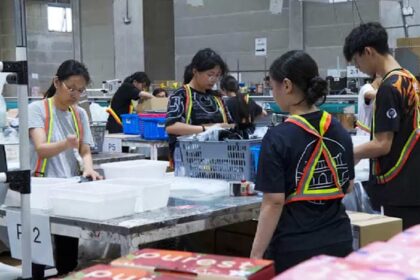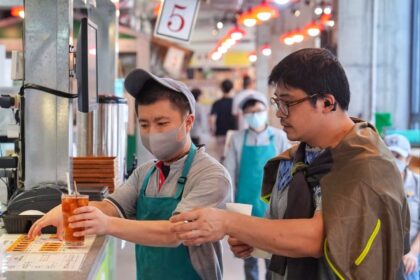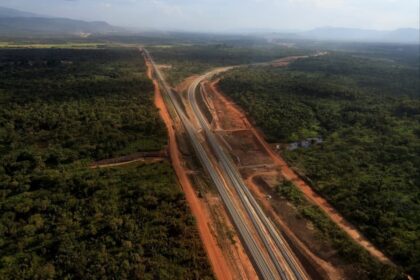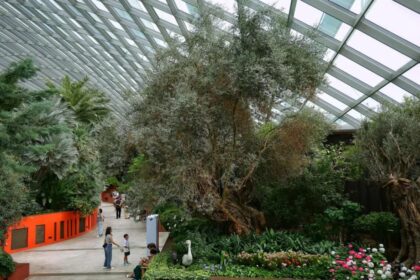A childhood question becomes a national energy mission
As a Year 4 student learning about photosynthesis, Ong Wee Jun asked a simple question: could sunlight be harnessed like plants do to power modern life? That curiosity became his life’s work. The Malaysian scientist now chases the same principle with tools from nanoscience and catalysis, storing sunlight in the bonds of clean fuels.
- A childhood question becomes a national energy mission
- What artificial photosynthesis actually does
- From lab breakthroughs to real projects in Malaysia
- How the science works inside these catalysts
- Waste to wealth using light and smart chemistry
- Hydrogen from water, moving from bench to field
- Why this matters for Malaysia and the region
- Collaboration, talent and digital tools accelerate progress
- The challenges that remain
- Key Points
Prof Dr Ong is Assistant Dean at Xiamen University Malaysia and the founding director of the Centre of Excellence for NaNo Energy & Catalysis Technology, known as CONNECT. He and his team design artificial leaves that copy the essential steps of photosynthesis. Their devices use engineered nanomaterials instead of chlorophyll to produce energy rich molecules.
CONNECT explores hydrogen from water, CO2 to methanol and other chemicals, and plastic waste to fuels. The long term vision includes modular solar driven hydrogen farms that can power rural communities, bringing cutting edge science to everyday needs.
What artificial photosynthesis actually does
Artificial photosynthesis uses light absorbing materials and catalysts to convert sunlight into chemical energy. The device absorbs photons, creates mobile charges, and uses those charges to split water or to reduce carbon dioxide. The output is a fuel that can be stored, transported and used when the sun is not shining.
In water splitting, one reaction releases oxygen and the other forms hydrogen. Semiconductors supply the energy while catalysts lower the barrier for each reaction. Hydrogen becomes an energy carrier for fuel cells and a clean input for ammonia, steel and refining.
Turning CO2 into fuels follows the same playbook. Tailored catalysts steer electrons to transform CO2 into carbon monoxide, formic acid or methanol. Devices can be powdered photocatalysts, photoelectrochemical cells with light absorbing electrodes, or electrocatalytic systems powered by renewable electricity. The target is the same, stable operation with high efficiency and reasonable cost.
From lab breakthroughs to real projects in Malaysia
CONNECT links discovery to deployment through collaborations with industry and government. In August 2024, Xiamen University Malaysia announced that Prof Ong received a PETRONAS Academia Collaboration Dialogue grant worth more than RM1 million. The project aims to use solar powered artificial photosynthesis to convert CO2 from flaring at onshore gas terminals into valuable chemicals, directly addressing an industrial emissions source.
The PETRONAS program selected 61 projects from 588 applicants across 25 universities. For CONNECT, it strengthens a portfolio that includes a prototype sun to hydrogen system targeted for completion by mid 2026, catalysts designed to curb greenhouse gases, and routes that turn palm oil waste into graphene and green hydrogen. The thread that ties these efforts together is simple, move promising nanocatalysts from controlled lab tests into robust devices that work under open sky.
How the science works inside these catalysts
Artificial photosynthesis stands on three pillars: materials that absorb light, architectures that keep charges apart, and catalytic sites that make reactions fast and selective. CONNECT’s research builds those pillars with a mix of two dimensional materials, smart junctions and earth abundant surface sites.
Two dimensional materials and heterostructures
Two dimensional materials, from graphene like carbon sheets to transition metal dichalcogenides, offer ultrathin pathways for charges. Stacking one 2D sheet on another creates a broad interface, a place where electrons and holes separate efficiently. By choosing pairs with band energies aligned to water splitting or CO2 reduction, these 2D on 2D heterostructures raise efficiency without relying on scarce elements.
Z scheme and S scheme charge flow
Natural photosynthesis uses two light steps, often drawn as a Z shape, to deliver high energy charges. Artificial devices mirror that logic with Z scheme and S scheme designs. Two light absorbers are wired so that only the strongest reducing electrons and strongest oxidizing holes survive, while the weaker carriers cancel each other. Keeping the most active charges improves difficult reactions and helps suppress side processes.
Metal carbides and MXene materials
Transition metal carbides, including MXenes, combine high conductivity with tunable surfaces. They can serve as light absorbers or as cocatalysts, the surface helpers that accelerate key steps and guide selectivity. MXenes are made by etching layered precursors to create conductive sheets. Their surface groups, set by the synthesis route, influence how well they adsorb molecules and move charges, which is central to stable, efficient solar fuel production.
Waste to wealth using light and smart chemistry
Plastics create convenience and a waste challenge. Photo and electro catalytic upcycling attack the problem with targeted chemistry. Under light or renewable power, catalysts can break long polymer chains and turn them into useful molecules such as formate, acetate, alcohols or hydrogen. CONNECT pairs this approach with agricultural residues too. Malaysia’s palm sector produces carbon rich wastes that can be upgraded into graphene and green hydrogen. The group reports a patent related to producing graphene and hydrogen from biomethane, showing how waste streams can become feedstock for materials and energy.
Hydrogen from water, moving from bench to field
Hydrogen made by sunlight sounds straightforward, yet integrating it outdoors is hard. A device must capture light effectively, split water, keep hydrogen and oxygen separate, and survive months of heat, rain and dust. CONNECT is building a larger prototype to test outside conditions, with a target of mid 2026 for a working sun to hydrogen unit that blends photocatalysis and photoelectrochemistry.
Two issues tend to dominate scale up. Efficiency, measured as solar to hydrogen efficiency, must rise while materials remain affordable. Many experts view 10 percent as a practical threshold, although costs vary by site. Durability is the other test. Catalysts can degrade under oxygen and intense light. Seawater adds chloride, which can trigger corrosion and chlorine formation. Teams address this with protective layers, selective membranes and reaction conditions that favor hydrogen and oxygen only.
Why this matters for Malaysia and the region
Malaysia aims for net zero emissions by 2050, which requires new clean fuels and smarter use of carbon. Artificial photosynthesis connects to several national priorities. Hydrogen can back up renewables and cut emissions in industry. Converting CO2 from flaring or process streams into feedstocks turns a waste into value. Upgrading plastic and biomass waste reduces landfill pressure and imported fossil inputs. Modular solar to fuel units could support schools, clinics and small businesses in remote areas where grid expansion is slow.
Collaboration, talent and digital tools accelerate progress
CONNECT advances by partnering with PETRONAS Research and national technology programs, and by blending skills across chemistry, materials, engineering and data science. Density functional theory and machine learning help screen thousands of candidate catalysts before a few are made in the lab, saving time and cost. Prof Ong mentors a growing group of postgraduate and postdoctoral researchers. Recognitions such as Highly Cited Researcher and the World’s Top 2 percent Scientist list underline the impact while the goal remains practical, devices that make clean fuels reliably in Malaysian conditions.
The challenges that remain
Artificial photosynthesis will likely complement, not replace, rising green hydrogen from electrolyzers. The path to scale still includes raising efficiency, improving durability, lowering balance of plant costs, and designing safe gas handling. CO2 conversion products often emerge as mixtures that need separation. Plastic upcycling requires predictable feedstock quality and selective catalysts. The 2026 prototype and the PETRONAS project will supply the field data that decides where this technology fits best within the country’s energy transition.
Key Points
- Prof Dr Ong Wee Jun leads CONNECT at Xiamen University Malaysia, focusing on artificial photosynthesis and nanocatalysis.
- His team works on hydrogen from water, CO2 to methanol and other products, and photo or electro catalytic plastic upcycling.
- A PETRONAS grant of more than RM1 million (August 2024) supports solar powered conversion of CO2 from flaring at onshore gas terminals.
- A prototype sun to hydrogen system is targeted for mid 2026 to test outdoor performance in Malaysia.
- Research tools include two dimensional heterostructures, Z scheme charge flow and metal carbides such as MXenes.
- Seawater hydrogen projects tackle chloride corrosion and selectivity to avoid chlorine.
- Partnerships with industry and the use of density functional theory and machine learning speed up catalyst discovery.
- The work aligns with Malaysia’s 2050 net zero goal and could aid rural energy access.












